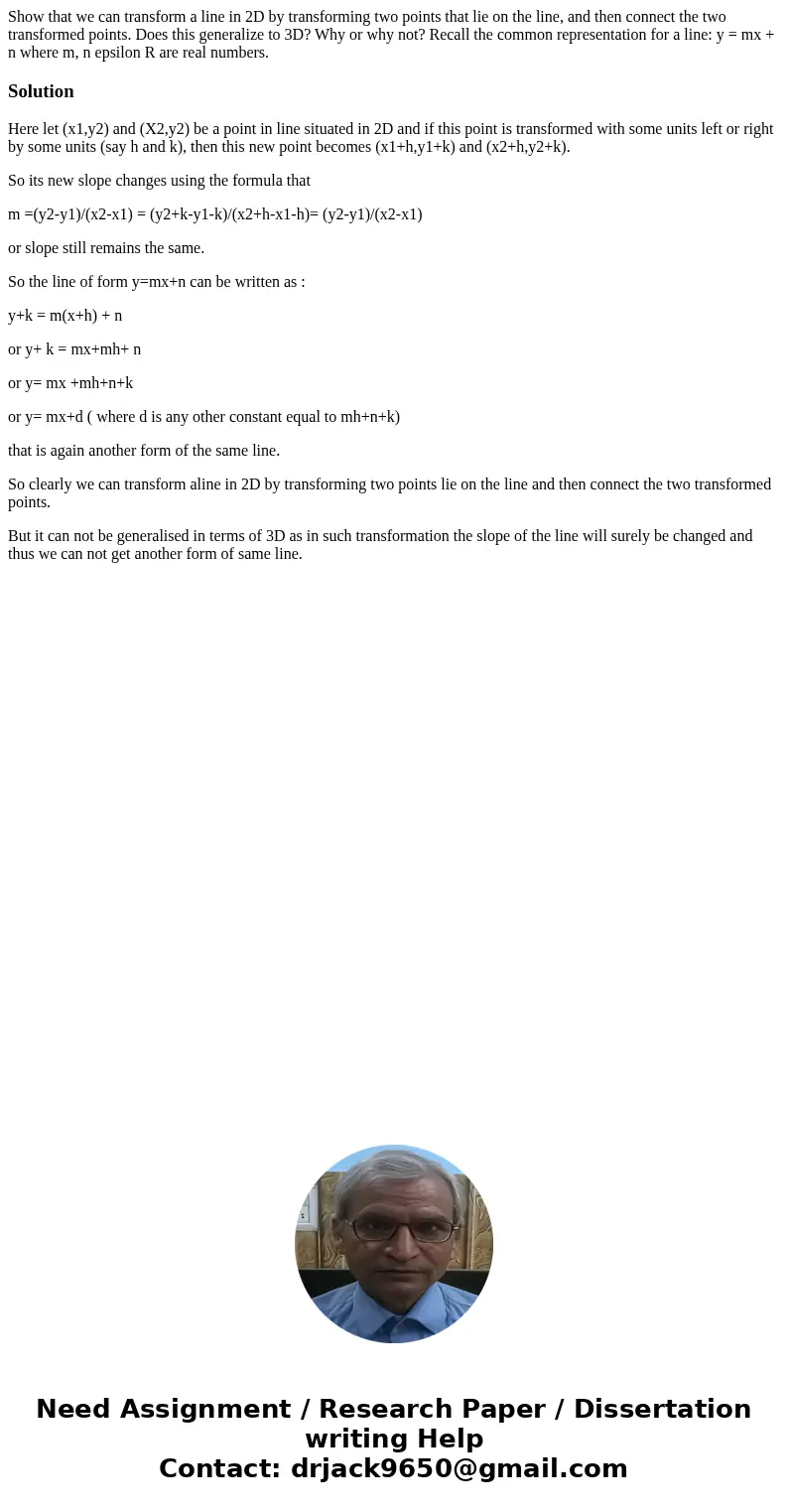Show that we can transform a line in 2D by transforming two
Solution
Here let (x1,y2) and (X2,y2) be a point in line situated in 2D and if this point is transformed with some units left or right by some units (say h and k), then this new point becomes (x1+h,y1+k) and (x2+h,y2+k).
So its new slope changes using the formula that
m =(y2-y1)/(x2-x1) = (y2+k-y1-k)/(x2+h-x1-h)= (y2-y1)/(x2-x1)
or slope still remains the same.
So the line of form y=mx+n can be written as :
y+k = m(x+h) + n
or y+ k = mx+mh+ n
or y= mx +mh+n+k
or y= mx+d ( where d is any other constant equal to mh+n+k)
that is again another form of the same line.
So clearly we can transform aline in 2D by transforming two points lie on the line and then connect the two transformed points.
But it can not be generalised in terms of 3D as in such transformation the slope of the line will surely be changed and thus we can not get another form of same line.

 Homework Sourse
Homework Sourse